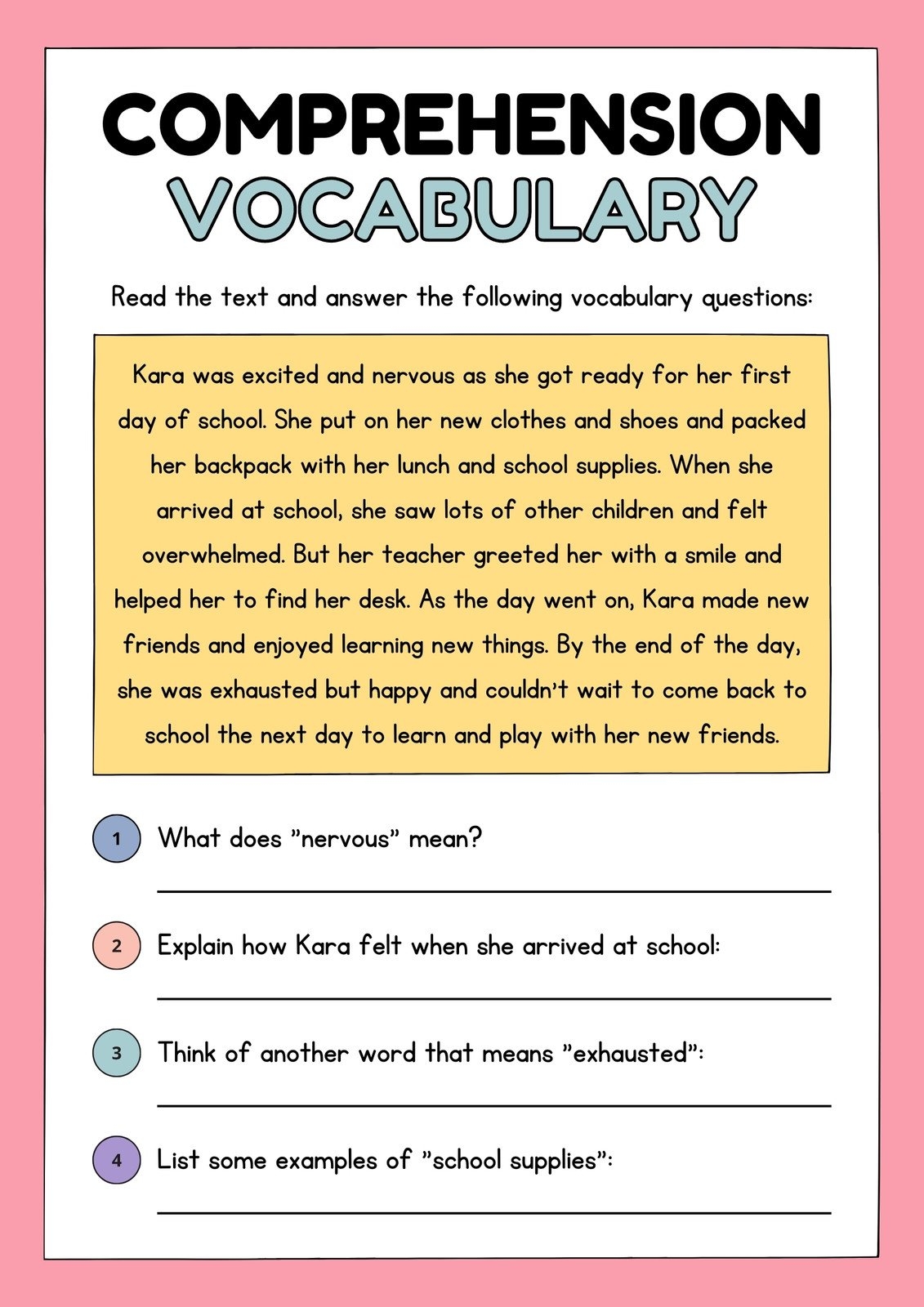Reading comprehension is an essential skill that allows individuals to understand and interpret written text. It involves not only understanding the words on the page but also grasping the underlying meaning and context. Here are some examples of reading comprehension in action:
1. Summarizing a Text: One example of reading comprehension is being able to summarize a passage or article in your own words. This involves identifying the main ideas and key points of the text and condensing them into a brief summary. By summarizing a text, you demonstrate that you have understood the material and can communicate its main points effectively.
2. Making Inferences: Another example of reading comprehension is making inferences based on the information presented in a text. This involves using clues and context to draw conclusions that are not explicitly stated. For example, if a character in a story is described as being very nervous and fidgety, you might infer that they are anxious or worried about something.
3. Identifying Main Ideas: Being able to identify the main ideas of a text is a key component of reading comprehension. This involves understanding the central themes or messages of a passage and recognizing the most important information. By identifying the main ideas, you can better understand the purpose and meaning of the text.
4. Analyzing Characters: When reading a story or novel, it is important to be able to analyze the characters and their motivations. This requires understanding the personalities, traits, and actions of the characters and considering how they contribute to the overall narrative. By analyzing characters, you can gain deeper insight into the story and its themes.
5. Drawing Conclusions: Reading comprehension also involves being able to draw conclusions based on the information presented in a text. This means using evidence and reasoning to make logical inferences about the text and its meaning. By drawing conclusions, you can demonstrate your understanding of the material and make connections between different parts of the text.
Overall, reading comprehension is a crucial skill that allows individuals to make sense of written information and engage with texts in a meaningful way. By practicing examples like summarizing, making inferences, identifying main ideas, analyzing characters, and drawing conclusions, you can improve your reading comprehension skills and become a more effective reader.
